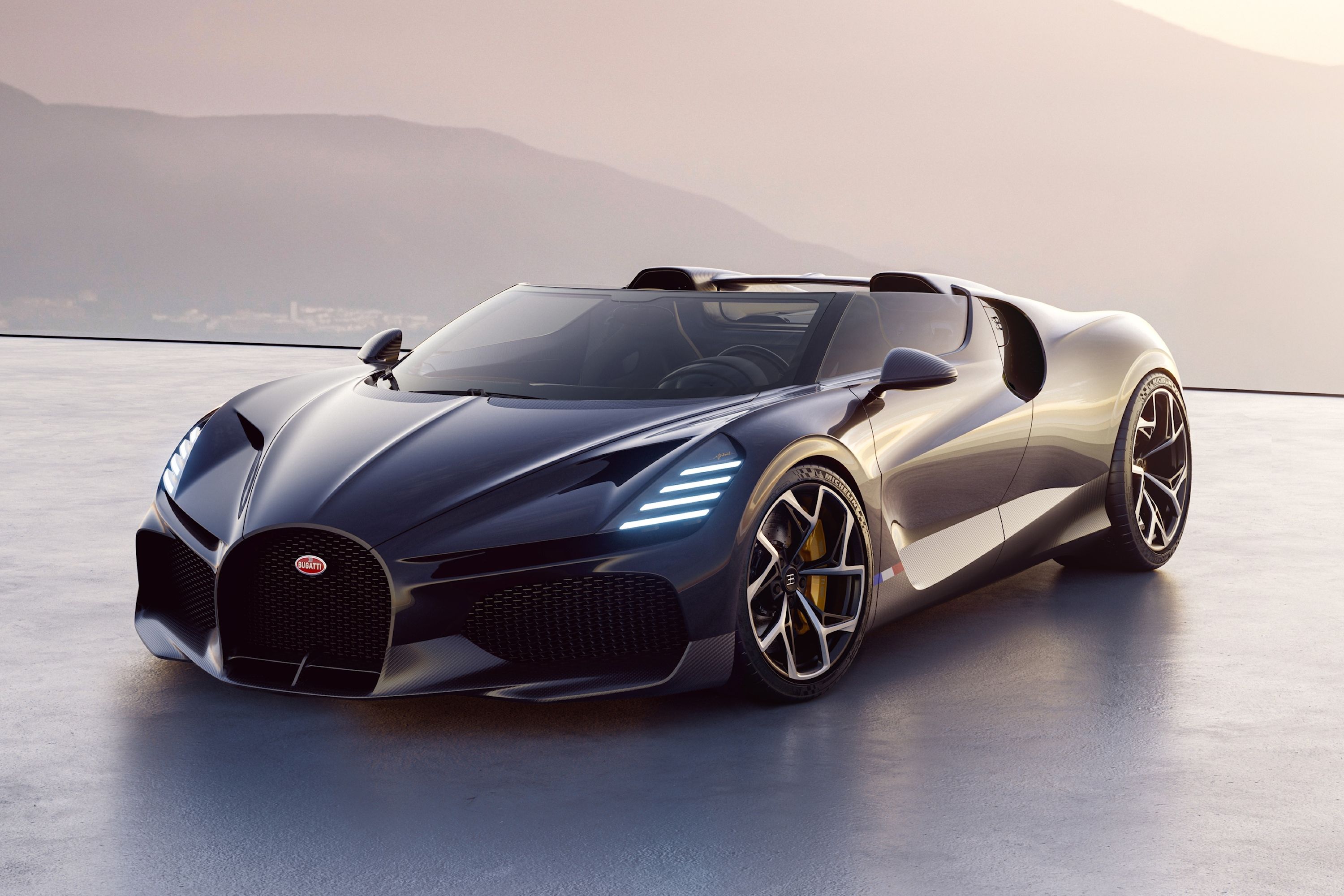
The Bugatti W16 Mistral is an absolute masterpiece. Not only is it wonderful to look at, but like all other Bugattis, it's an exemplar of engineering excellence. With the Mistral, the hypercar brand hopes to lay claim to the title of the world's fastest roadster. That can't be much of an issue for Bugatti, can it? As it turns out, designing a topless car that can breach the 260-mph mark is a lot harder than it seems - even for the Molsheim-based brand.
A pair of intakes - one near the wheel and another in the headlamp - manage the airflow around each front corner of the vehicle. The air is guided to a low-pressure area in the wheel well, reducing turbulence and drag, but there's much more ingenious engineering and design at play.
"Managing both thermodynamics and aerodynamics effectively is key to achieving more than 420 kph [260 mph] in an open-top car, even with 1,600 PS [1,578 horsepower] from perhaps the most advanced automotive engine ever created," said Bugatti Rimac Chief Technology Officer, Emilio Scervo.
He added, "We have to think very carefully about how we shape the W16 Mistral to guide air through the car and around the car to delicately balance both cooling and aerodynamics. But, of course, we must do all this with a sense of elegance befitting a Bugatti roadster."
In 'Top Speed' mode, the W16 Mistral will be capable of going beyond 260 mph. With this setup in place, the optimized diffuser will provide the roadster with all the stability it needs. Bugatti has elevated the diffuser's rake angle and expansion ratio for a stable and secure feel.
"Supreme control in all conditions and at all speeds is a core part of Bugatti DNA, and to deliver this characteristic, the aero map of W16 Mistral has been carefully defined," remarked Scervo. "Through the synthesis of engineering prowess and design talent, W16 Mistral achieves a delicate balance of drag reduction and downforce through its carefully designed front splitter, aerodynamic underbody, and the high energy airflow around the airfoil-shaped rear wing when deployed."
At this point, you may be wondering why Bugatti is aiming for 260 mph. That's considerably less than the 300-mph target Hennessey has set with the Venom F5 Roadster. But the key difference here is that the Venom F5 Roadster has a roof.
Bugatti, on the other hand, is hoping to hit 260 mph without a roof. Any attempt that Hennessey makes with the roof in place will not qualify it for the title of the world's fastest roadster.
At the front, you'll notice the Bugatti horseshoe grille is deeper and wider than before. This allows the engine radiator to rely solely on one intake for cooling; the side intakes only provide air to the intercoolers.
The roadster profile also forced the design team to rethink the Bugatti C-line. The design line wraps around the side air intake and connects with the edge of the side windows. This, says the automaker, is a crucial part of the W16 Mistral's identity, and incorporating was no mean feat.
"To get it right, we needed to separate the air intake for the engine from the air intake for the oil cooler. If we kept them together, the intake on each side of the car would have had to have been enlarged out of proportion," said Achim Anscheidt, Bugatti Rimac Design Director.
While aerodynamics and cooling efficiency are important, creating a motorcar that is desirable and recognizable as a Bugatti was also a top priority.
Bugatti designers looked to the past, with the Veyron 16.4 Vitesse and the Type 57 Roadster Grand Raid serving as inspiration. The engine air intakes were cleverly positioned behind the occupant's headrests. Not only do they feed air to the oil coolers, but they also protect the driver and passenger in the event of a rollover crash.
As you would expect for a car with a $5 million price tag, the interior is also a work of art. Again, Bugatti looked to its rich back catalog and settled on the Type 41 Royale as a muse. The gear-lever, for example, is machined from a solid block of aluminum and features wood and an amber insert with Rembrandt Bugatti's famous 'dancing elephant' sculpture.
Elsewhere, the interior has been trimmed with exquisite woven leather, a first for the ultra-luxury automaker.
"The W16 Mistral is a special moment in the history of Bugatti; the kind of car that will be seen on the lawns of top Concours d'Elegance events for decades or even centuries," adds Anscheidt.
And that's not just because it's a Bugatti. W16 Mistral will be the last car that will gain motivation from the mighty 8.0-liter W16 engine, considered to be one of the finest powerplants ever made. Rumors suggested that the 16-cylinder behemoth would live on with hybrid assistance, but the unparalleled engine isn't long for this world.
That's a shame, but we can expect lots of exciting things to come from the Bugatti Rimac alliance. Thankfully, an electric Bugatti is not coming for at least a decade, but the W16 still will be missed. No wonder all 99 sold out long before it was revealed.
